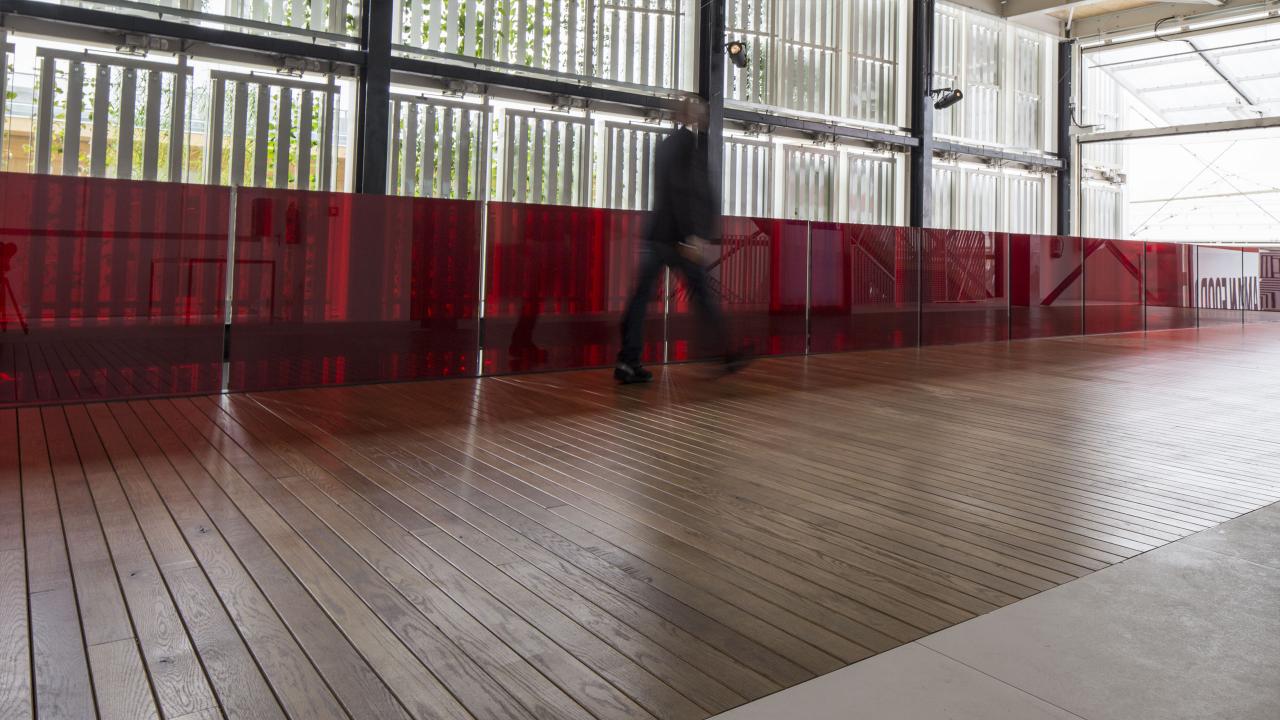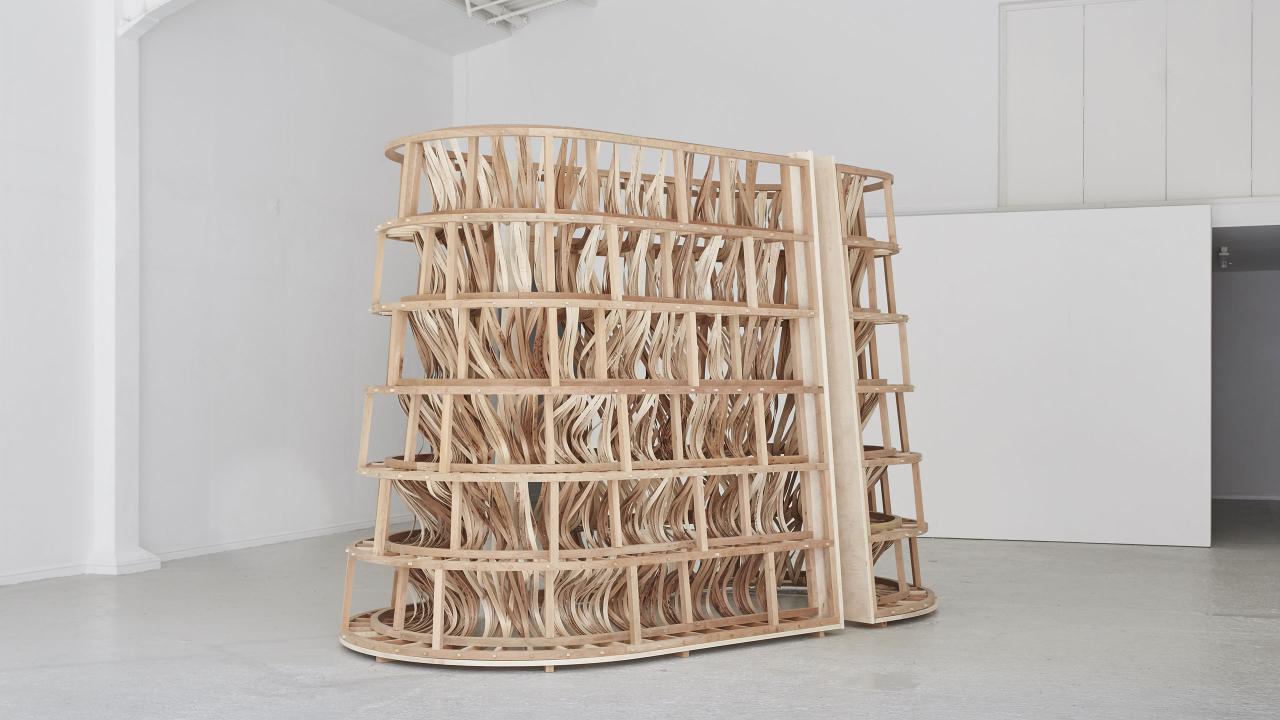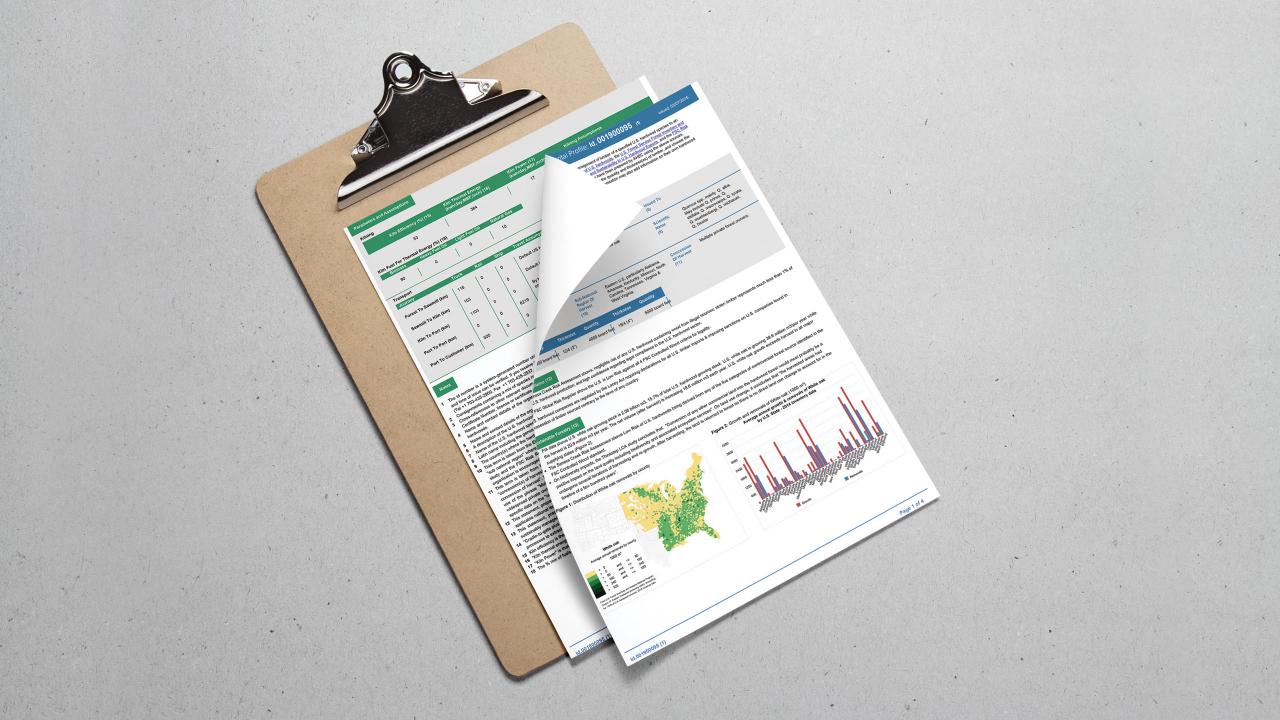-

-
GROWN IN SECONDS
We regularly call on historic federal forest inventories to demonstrate the remarkable sustainability of American hardwoods. The American hardwood timber resource is large and growing rapidly; between 1953 and 2012 the volume of hardwood growing stock increased by 130%. We use this inventory data to calculate that it takes less than 25 seconds for the American white oak in this 500m2 deck to be replaced by natural forest regrowth.
-
-

-
WOODEN STRUCTURE WITH A LOWER CARBON FOOTPRINT THAN AN iPhone
We conduct an environmental life cycle assessment of every creative project we undertake to highlight the positive environmental impact of wood. This means we know that Sebastian Cox and Laura Ellen Bacon, creators of the Invisible Store of Happiness, produced less carbon in the manufacture of their 2.8 metre high and 4.4 metre long wooden structure than an iPhone 6.
-
-

-
THE AMERICAN HARDWOOD ENVIRONMENTAL PROFILE (AHEP)
We created the AHEP, an online system which helps buyers comply with EU Timber Regulation (EUTR) and other similar laws. This tool is just one of the ways we strive to safeguard the value and reputation of legally harvested American hardwood in world markets.
-
Environmental Profile
OVERVIEW
American hardwoods are legal, sustainable and have low environmental impact. We know this because:
- The Assessment of Lawful Harvesting & Sustainability of U.S. Hardwood Exports commissioned by AHEC from Seneca Creek Associates which demonstrates there is less than a 1% risk of any illegal wood entering the U.S. hardwood supply chain.
- The Forest Service Forest Inventory and Analysis (FIA) Programwhich shows that between 1953 and 2012 the volume of U.S. hardwood growing stock increased from 5.2 billion m3 to 12.0 billion m3, a gain of over 130%;
- On-going scientific Life Cycle Assessment work which shows that the carbon stored in American hardwood at point of delivery to any country in the world almost always exceeds the carbon emissions associated with extraction, processing and transport.
Drawing on these and other independent sources, AHEC has developed an on-line system to allow U.S. hardwood exporters to provide a comprehensive American Hardwood Environmental Profile (AHEP) with every individual consignment of product delivered to any market in the world.
You can explore the environmental profile of American hardwoods in more detail using these online tools:
- American Hardwood Forest Explorer provides detailed information on hardwood forest volume, growth and harvest at state and county level throughout the United States.
- American Hardwood Environmental Profiler is an interactive tool for AHEC members providing environmental impact data such as carbon footprint, forest replenishment time, acidification, and eutrophication for different species, lumber thicknesses and transport scenarios.
LEGALITY
A key priority for AHEC is ensuring that neither the value nor the reputation of legally harvested American hardwood is undermined in world markets by competing products from illicit sources. We support legislation prohibiting trade in illegally harvested timber and provide tools to demonstrate negligible risk of any U.S. hardwood being derived from an illegal source.
SUSTAINABILITY
While forests are dynamic eco-systems in which species composition will shift over time, regular forest inventories undertaken by the federal government demonstrate that there is rapid growth in the volume of nearly all commercial hardwoods in U.S. forests. This growth is also well distributed throughout the United States.
ENVIRONMENTAL IMPACT
Environmental issues are only effectively integrated into material specification and green building design through a scientific Life Cycle Assessment (LCA) based approach. LCA involves the collection and evaluation of quantitative data on all the inputs and outputs of material, energy and waste flows associated with a product over its entire life cycle so that the environmental impacts can be determined. LCA is universally applicable to all material sectors so that objective, science based comparisons can be made of their true environmental impact. LCA also provides a tool allowing industry to identify the most efficient ways of reducing these environmental impacts, ensuring that efforts to reduce one impact do not result in environmental degradation elsewhere.
AMERICAN HARDWOOD ENVIRONMENTAL PROFILE
AHEC has developed an easy to use on-line system to allow U.S. hardwood exporters to provide a comprehensive American Hardwood Environmental Profile (AHEP) with every individual consignment of product delivered to any market in the world.
Each AHEP provides access to information on the risk of illegality and the sustainability of the U.S. hardwood species contained in that consignment, together with quantitative data on the environmental impacts associated with delivering that consignment to an individual customer anywhere in the world.